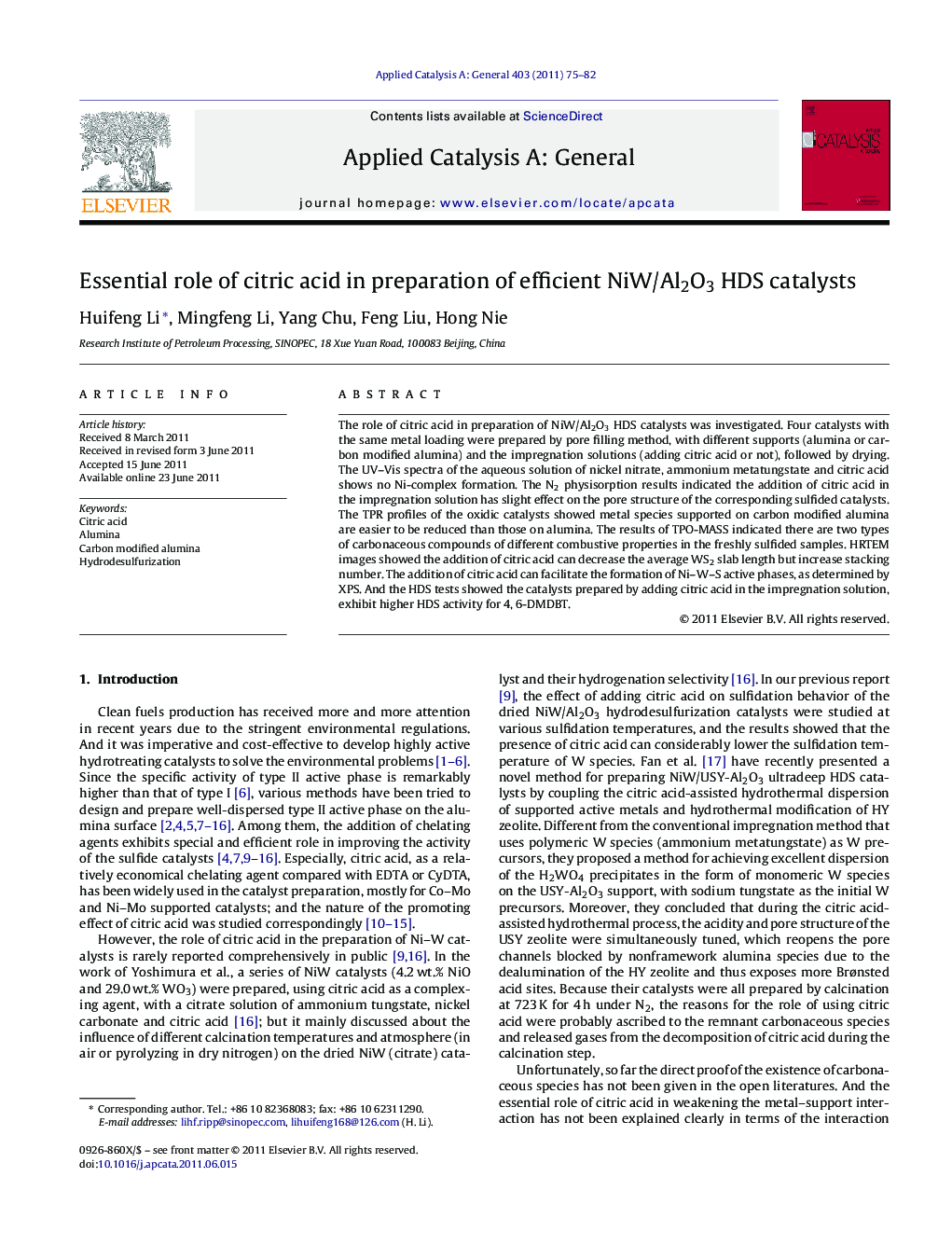| Article ID | Journal | Published Year | Pages | File Type |
|---|---|---|---|---|
| 41405 | Applied Catalysis A: General | 2011 | 8 Pages |
The role of citric acid in preparation of NiW/Al2O3 HDS catalysts was investigated. Four catalysts with the same metal loading were prepared by pore filling method, with different supports (alumina or carbon modified alumina) and the impregnation solutions (adding citric acid or not), followed by drying. The UV–Vis spectra of the aqueous solution of nickel nitrate, ammonium metatungstate and citric acid shows no Ni-complex formation. The N2 physisorption results indicated the addition of citric acid in the impregnation solution has slight effect on the pore structure of the corresponding sulfided catalysts. The TPR profiles of the oxidic catalysts showed metal species supported on carbon modified alumina are easier to be reduced than those on alumina. The results of TPO-MASS indicated there are two types of carbonaceous compounds of different combustive properties in the freshly sulfided samples. HRTEM images showed the addition of citric acid can decrease the average WS2 slab length but increase stacking number. The addition of citric acid can facilitate the formation of Ni–W–S active phases, as determined by XPS. And the HDS tests showed the catalysts prepared by adding citric acid in the impregnation solution, exhibit higher HDS activity for 4, 6-DMDBT.
Graphical abstractFigure optionsDownload full-size imageDownload high-quality image (333 K)Download as PowerPoint slideHighlights► Citric acid does not chelate Ni ions in the Ni–W impregnation solution at pH ≈1.5. ► Citric acid partly changes into the carbonaceous material during sulfidation. ► Citric acid moderates the metal–support interaction by tailoring alumina surface. ► Citric acid decreases the WS2 slab length by its isolating effect. ► The catalyst benefiting from both roles of citric acid, shows high HDS activity.
